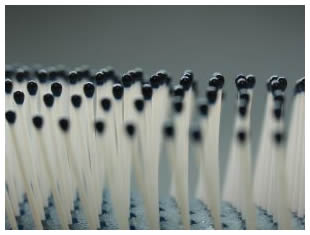 In its most extreme form, it is not uncommon for a person with OCD to also experience generalized anxiety disorder, recurrent panic attacks, debilitating avoidance of places and situations, as well as major depression. These are additional to the time-consuming and often distressing rituals which form the basic of this disorder.
In its most extreme form, it is not uncommon for a person with OCD to also experience generalized anxiety disorder, recurrent panic attacks, debilitating avoidance of places and situations, as well as major depression. These are additional to the time-consuming and often distressing rituals which form the basic of this disorder.
People with OCD fight a battle against themselves every day. Intrusive thoughts about impending disasters alternate with meaningless and repeated behaviors aimed at reducing the anxiety caused by obsessive thoughts of doom. Sufferers of OCD are simply not able to stop either the recurrent thoughts or the associated compulsive behaviors merely by an act of will, and family and associates of the sufferer do no favors either to the sufferer or themselves by insisting that the sufferer “pull themselves together”. The sufferer is in extreme pain at all times, and if left untreated, the condition has the potential to effectively take over the life of the sufferer, taking away their ability to hold down a job, undertake housework, or even make and maintain long-term relationships.
Due to the pervasive nature of the condition, it is not surprising that people suffering from OCD are more likely to be hospitalized than sufferers of any other type of mental illness.
Why do OCD sufferers think what they think and do what they do?
Sufferers themselves report that most of the obsessional behaviors characteristic of OCD originate from attempts to suppress sexual thoughts, acts of aggression, or to relieve feelings of guilt. Typical obsessive thoughts are generally associated with some form of disaster (either to the self or involving others), or fears of contamination (the idea that germs are everywhere and harm will come from contact with persons and objects and therefore continual removal of these germs is necessary for survival).
Other common thoughts concern inappropriate behaviors ( such as yelling out in a crowded venue, throwing themselves under a train as it comes into a station, jumping off a cliff) together with the issue of safety ( the person will continually check that a door is locked, even though they are consciously aware that they locked the door only moments before.)
Certain types of obsessions appear to be linked with certain types of rituals. It has commonly been recorded that aggressive and sexual obsessions are more commonly associated with checking rituals. Hence a person with intrusive thoughts of sexual images or acts of retribution will more likely, in general, display lock checking behaviors.
Conversely, obsessions based on issues of control usually result in compulsive behavior involving the ordering of objects. Hence a person who feels their life is out of control and suffers from OCD will attempt to regain that control by precisely categorizing and ordering their possessions. For example, books may be place in a bookshelf in order of size, or color of cover. Household ornaments will be moved and re-moved until the position is just right, and any attempt by others to change the position will result in distress to the sufferer and a compulsion need to restore the object back to its original position. Some OCD sufferers hoard objects for years, unable to throw anything away, which can result in the person living in a severely restricted area of their home, often within half a room with the rest of the house filled to the ceiling with useless objects collected over decades.
Next blog: Causes and Treatment Options
Contact Beth McHugh for further information or assistance regarding this issue.

